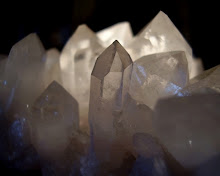 There is much going on in this months night sky. Here is a quick little calender/guide I have created so you can enjoy these exceptional and phenomenal events from the universe.
There is much going on in this months night sky. Here is a quick little calender/guide I have created so you can enjoy these exceptional and phenomenal events from the universe. February 9th
February 9th
See my archives or 'search' my blog for several different full moon blessings and ancient rituals.

Total Lunar Eclipse
 February 9th
February 9th
Penumbral Lunar Eclipse. The eclipse will be visible throughout most of eastern Europe, Asia, Australia, the Pacific Ocean, and western North America. No major magic should be done during this time. Only self cleansing, thankfulness and blessings of abundance should be given.
 New Moon
New Moon
 February 25th
February 25th
See my archives or 'search' my blog for several different new moon blessings and ancient rituals.

 Planets
Planets
 New Moon
New Moon February 25th
February 25th
See my archives or 'search' my blog for several different new moon blessings and ancient rituals.

 Planets
Planets
 Venus
Venus
The highlight of the month of February. Located about 30-40 degrees above the southwest horizon, Venus is the brightest “star” looking planet in the sky for the first few hours of the night. Venus is at maximum height at the beginning of the month. As the month progresses, it will appear slightly lower in the sky. On
 February 20, it will be at its brightest. Through a telescope, Venus appears like a brilliant less than half moon. The Moon will pass within 1.2 degrees of Venus on the night of the 29th.
February 20, it will be at its brightest. Through a telescope, Venus appears like a brilliant less than half moon. The Moon will pass within 1.2 degrees of Venus on the night of the 29th. Conjunction of Jupiter, Mars & Mercury
Conjunction of Jupiter, Mars & Mercury
All are located near each other in the morning sky. Mercury is the only visible planet of these three at the start of this month. On February 24th, all three planets will be within 4 degrees of each other. The trio of planets will be easiest to find in the early morning of
 February 22nd and the 23rd.
February 22nd and the 23rd.  The sky will be darker as the moon will be in crescent shape. Look to the east about half an hour before sunrise. Binoculars may be needed to spot Mars as it will be hiding near the early glow of twilight.
The sky will be darker as the moon will be in crescent shape. Look to the east about half an hour before sunrise. Binoculars may be needed to spot Mars as it will be hiding near the early glow of twilight.
 Ceres is the biggest asteroid in the Main Belt with a diameter of 585 miles or 975 km. It is so big that it is now considered a Dwarf Planet. Classified as a carbonaceous (carbon-rich) Cg-type asteroid, there are suggestions that it may be rich in volatile material such as water. Some even propose that an ocean exists below the surface. Ceres is one of two targets for NASA’s Dawn spacecraft which is scheduled to visit it in 2015. This month Ceres is located in Leo brightening from magnitude 7.2 to 6.9. It reaches its brightest at opposition on
Ceres is the biggest asteroid in the Main Belt with a diameter of 585 miles or 975 km. It is so big that it is now considered a Dwarf Planet. Classified as a carbonaceous (carbon-rich) Cg-type asteroid, there are suggestions that it may be rich in volatile material such as water. Some even propose that an ocean exists below the surface. Ceres is one of two targets for NASA’s Dawn spacecraft which is scheduled to visit it in 2015. This month Ceres is located in Leo brightening from magnitude 7.2 to 6.9. It reaches its brightest at opposition on  February 25.
February 25. Pallas is also a carbonaceous asteroid though with a slightly bluish B-type spectrum. Due to its high inclination (tilt of its orbit with respect to Earth’s orbit) of 34 degrees it is a difficult target for future spacecraft missions. Pallas is large with dimensions of 350×334x301 miles or 582×556x501 km. This month it moves through the far southern constellations of Eridanus and Lepus. It fades from magnitude 8.2 to 8.4 over the course of the month.
Pallas is also a carbonaceous asteroid though with a slightly bluish B-type spectrum. Due to its high inclination (tilt of its orbit with respect to Earth’s orbit) of 34 degrees it is a difficult target for future spacecraft missions. Pallas is large with dimensions of 350×334x301 miles or 582×556x501 km. This month it moves through the far southern constellations of Eridanus and Lepus. It fades from magnitude 8.2 to 8.4 over the course of the month. Euterpe was the 27th asteroid discovered when it was first seen in 1853. It is an S-type asteroid with a stoney or silicate composition. With a diameter of 58 miles (96 km) it is much smaller than Ceres, Pallas or Vesta. The reason it can get as bright as them is due to its orbit which brings it closer to the Sun and Earth. This month Euterpe is located in Cancer. It starts the month at magnitude 8.9 and is at its brightest at opposition on
Euterpe was the 27th asteroid discovered when it was first seen in 1853. It is an S-type asteroid with a stoney or silicate composition. With a diameter of 58 miles (96 km) it is much smaller than Ceres, Pallas or Vesta. The reason it can get as bright as them is due to its orbit which brings it closer to the Sun and Earth. This month Euterpe is located in Cancer. It starts the month at magnitude 8.9 and is at its brightest at opposition on  February 4 at magnitude 8.8. By the end of the month, it will have faded to 9.6.
February 4 at magnitude 8.8. By the end of the month, it will have faded to 9.6. Amphitrite was discovered in 1854, Amphitrite was the 29th asteroid to be discovered. Similar to Euterpe, Amphitrite is also a stoney S-type asteroid. With an average diameter of 127 miles (212 km) it is bigger than Euterpe though its further distance from the Earth and Sun keeps it from getting as bright. Ampitrite is located in Leo all month and will brighten from magnitude 10.2 to 9.7. It will reach its brightest at opposition on March 22 at magnitude 9.1.
Amphitrite was discovered in 1854, Amphitrite was the 29th asteroid to be discovered. Similar to Euterpe, Amphitrite is also a stoney S-type asteroid. With an average diameter of 127 miles (212 km) it is bigger than Euterpe though its further distance from the Earth and Sun keeps it from getting as bright. Ampitrite is located in Leo all month and will brighten from magnitude 10.2 to 9.7. It will reach its brightest at opposition on March 22 at magnitude 9.1. Comet Lulin was discovered by the Lulin Sky Survey in Taiwan on 2007 July 11. At the time the comet was located beyond the orbit of Jupiter. It will be closest to Earth in
Comet Lulin was discovered by the Lulin Sky Survey in Taiwan on 2007 July 11. At the time the comet was located beyond the orbit of Jupiter. It will be closest to Earth in  late-February and may be able to be seen with the
late-February and may be able to be seen with the  naked eye.
naked eye.Much but not all of this information was provided by The Transient Sky website.


















3 comments:
Thanks for the info on the comet.
Anytime Robert! I don't know if I would have done such an extensive blog post about this month had I not witnessed such an interesting site on the night of the 4th.
I was sitting in our bedroom upstairs and a sudden but large streak of bright white light caught my attention. When I looked up I saw the large streak go across the entire window. The front was huge and a brilliant white. It had all these falling particles shotting and streaming off from the bottom and behind. It was way too big to be a normal falling star that we see on any given clean night out here. This thing was huge like a comet but it passed suddenly. I then read the next day that part of the tail from comet Lilin had broken off. So in theory that's what I saw. I'm just thankful the news didn't chuck it off as 'space trash/junk' this time.
You can read more about the comet, the tail breaking off and the near miss with another star at http://www.SpeaceWeather.com
** WRONG Address... I had a typo.
http://www.SpaceWeather.com
So sorry! :-)
Post a Comment